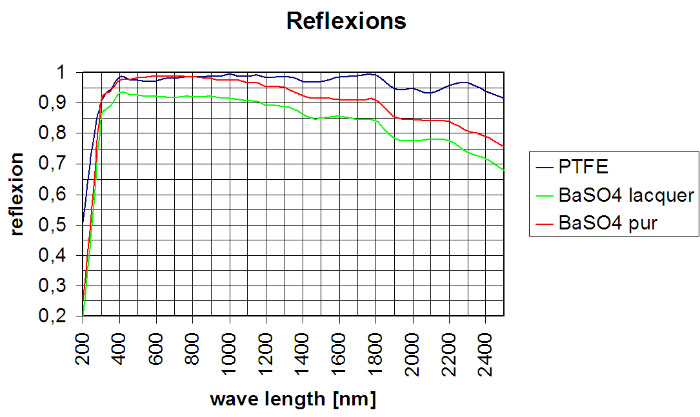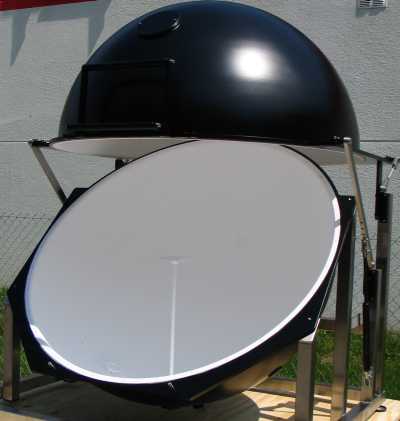
Integrating Spheres
For characterization and quantificationmeasuring of light signals we produce integrating spheres made of stable, spectral uniform reflective materials with very good Lambert Properties.
For all laminations we use only ultrapure selected materials without self lumination and free of luminescence
Examples for use:
For uniform light sources to calibrate radiometers, photometers, images, detectors etc. The near-perfect uniform radiating light sources are used for calibration e.g. of radiometers, photometers, images, detectors and as luminance or spectral radiance standard as well as for flare measurements.
The port size depends on the diameter of the sphere. A rule of thumb gives a ratio of about 5 % between the area of the port and the photometric active area of the sphere. According to requirements there are one or more light sources in satellite spheres or in the sphere itself shuttered across from direct illumination of the emission port.
As power meter, for applications in light and power measurements e.g. of lasers, diodes and LEDs, fibres.
There are two essential advantages of measuring narrow emitting lasers, first the insensitivity against different wave angles of incidence and second the attenuation of the high power if needed. The power is measured by means of customized optical receivers with PC interface. With a PC a graphical and digital display of the measured results is possible. The results can then be stored on the PC. With an optional spectrometer the spectral measurement of the light source can be realized
Reflexion-, transmission- and absorption measurement
radiometric and spectrale transmission or reflexion measurement of diffuse materials (DIN 5036)
A probe will be illuminated and the refelected or transmitted light will be collected in a integrating sphere and measured with a photometer. The absorption can be measured with 2 integrating spheres. The first measures the reflected signal, the second the transmitted signal, then the absorption can be calculated. Reflected and transmitted signals are mostly diffuse. Only with an integrating sphere a measurement is possible for measuring the total reflected and transmitted signal.
Photometer for colour measurement
the complete reflected light radiation can be collected in an integrating sphere and a colour specific curve can be measured with a connected spectrometer.
Reflextion diagramm:

Laminations:
- Lamination BASO4 based:
The BaSO4-lamination is price sensitive and well qualified for the visible spectral range. It also can be used in a wider range taking in account the spectral reflection curve. Our special photometer laquer can be sprayed on nearly all basic materials. Our laquer needs to be printed in at least 20 layers. Therefore we get an almost perfect diffuse reflection independently from the wave lengh in the visible spectral range.
spectral range: 180 - 1300 nm
reflexion: > 90%
possible diameters: 10 - 3000 mm - Lamination with sintered optical PTFE
The PTFE is an optimum solution for wave length between 180 nm until 2500 nm. It can be used in ultra violet range, in the visible range and also in the near infrared range. The minimum thickness is 8mm. Depending on the size, the integrating sphere is milled out of a block, or a metal globe will be coated with PTFE plates
spectral range: 180 - 2500 nm
reflexion: > 99%
possible diameters: 10 - 500 mm - Gold plated integrating sphere
Above 1000 nm a gold plated integrating sphere can be used. Depending on the size and necessary diffuse property, the gold will be added galvanical or through vacuum evaporating. The know-how is in the repeatability of the diffuse property, as the typical golden sheen is not required in this case.
spectral range: 1100 - 20 000 nm
reflexion: > 96%
possible diameters: 10 - 500 mm
Lambert Property:
descibes the ideal diffuse reflexion of a lustless surface. The light will be dispearsed equable in all directions.
Contact: info(at)doser(dot)de





